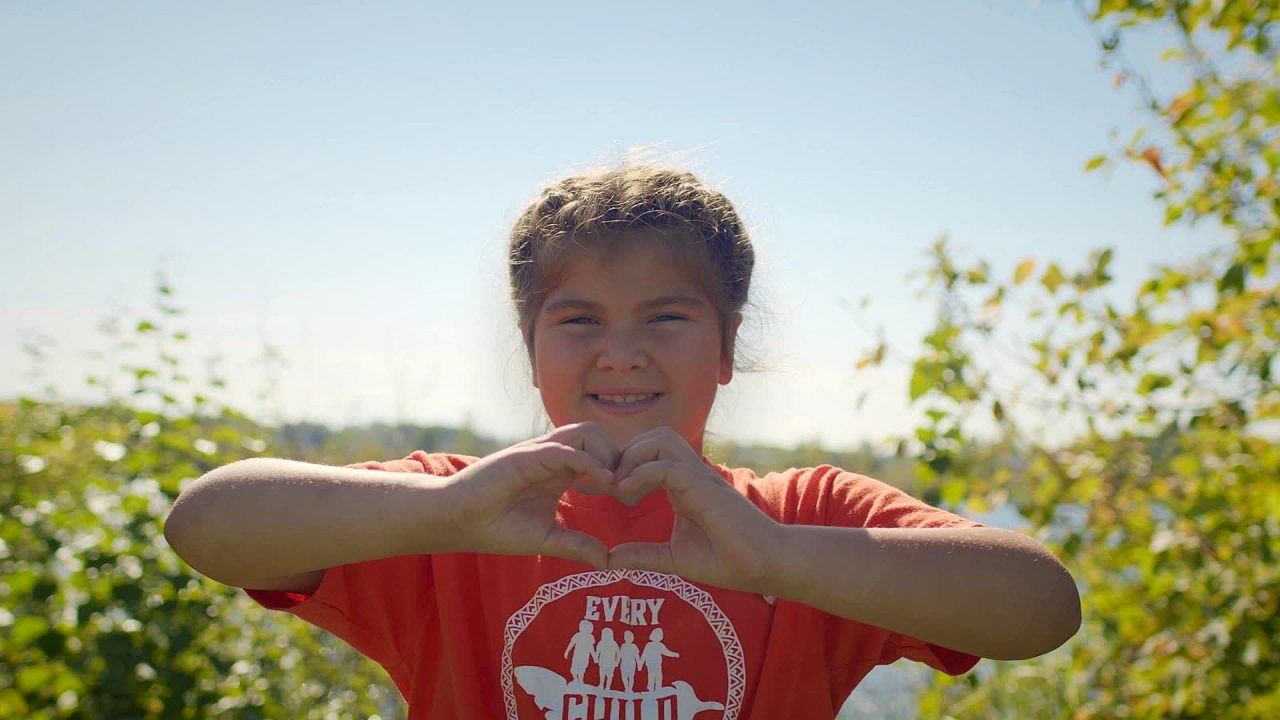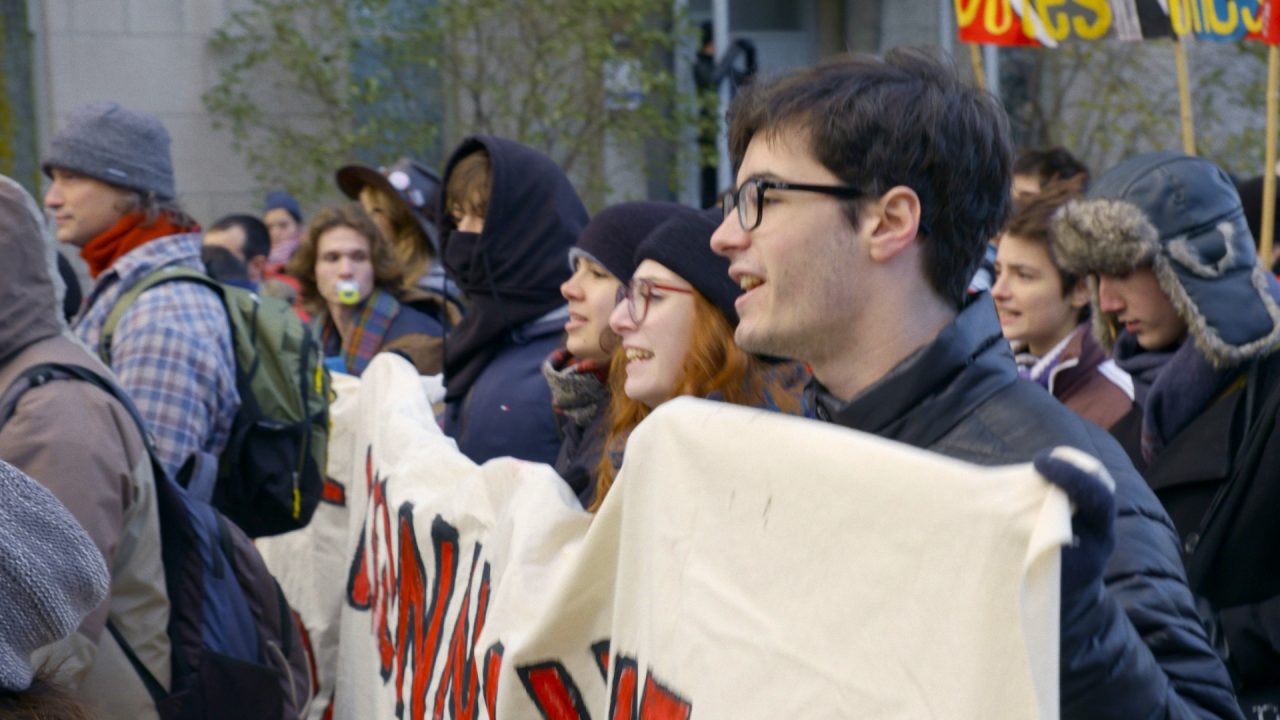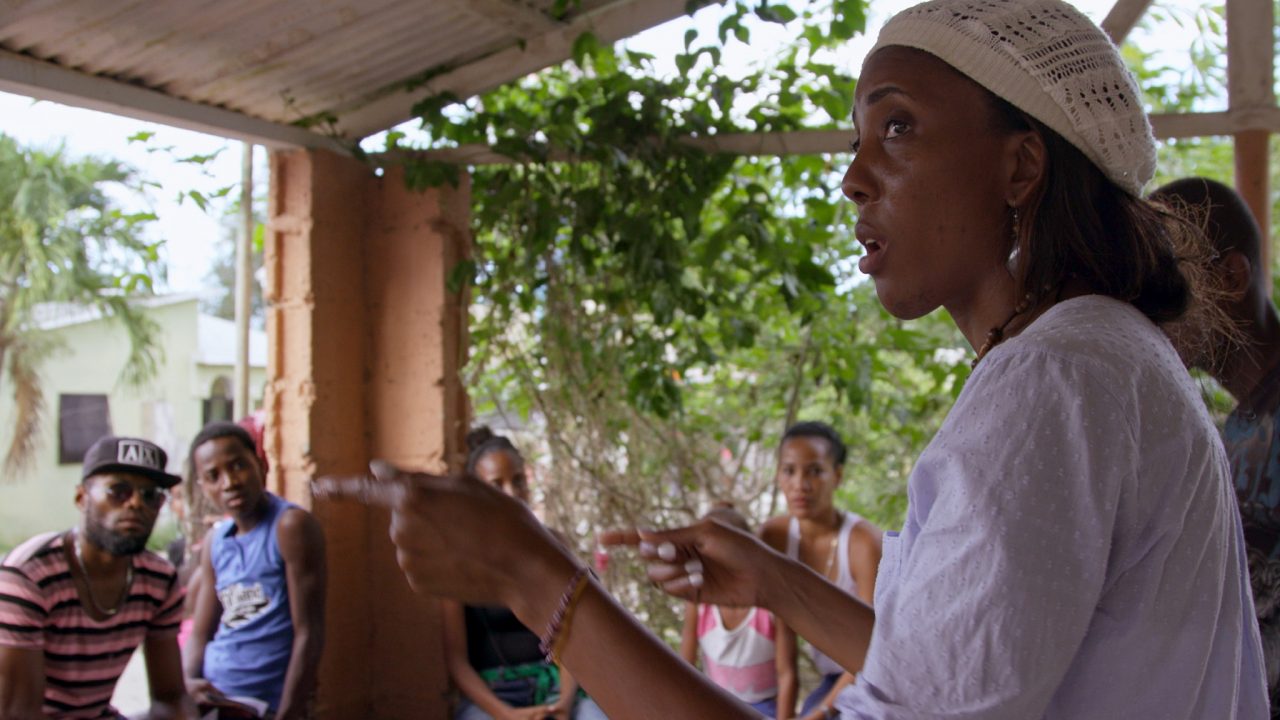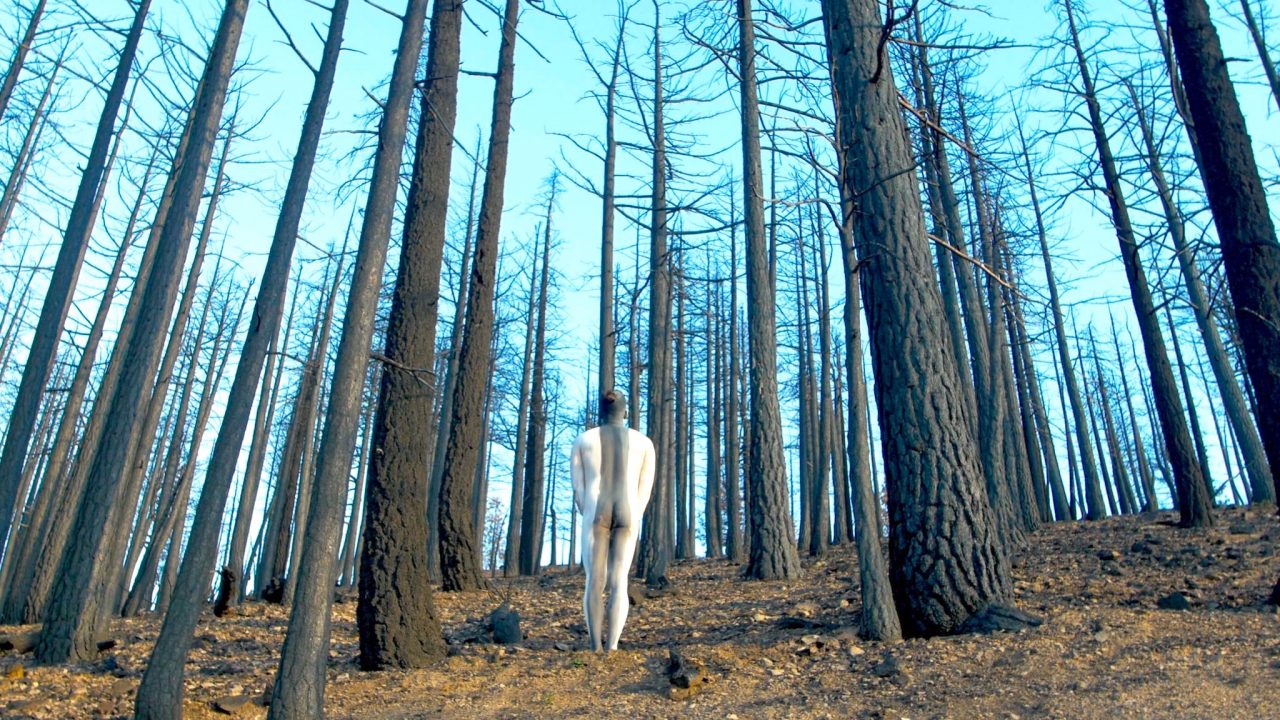The Colour of Beauty: Exploring racism in the fashion industry
The following is a guest post by Aisling Chin-Yee. It originally appeared on the Work For All website.
The Colour of Beauty, Elizabeth St. Philip, provided by the National Film Board of Canada
The Colour of Beauty is a short documentary about racial discrimination in the fashion industry. Director Elizabeth St. Philip follows a young and fiercely talented Black model, Renee Thompson, as she navigates the fashion world as a visible minority.
This film asks: Why isn’t the multi-cultural society that we live in reflected in our magazines, on billboards and on the runways of fashion shows? And who are the parties involved in this industry’s lack of diversity? Does the answer lie somewhere in the back rooms of fashion magazines or in the offices of casting directors of fashion shows? Is it something that is discussed at advertising agencies, or between designers and modelling agencies? Whatever the answer, the fact is that models of colour work less, and their chances of success are very low.
And what do you think? Work For All in partnership with Schema Magazine is launching a quest for your stories about how racism affects the world of fashion. And, we are launching a live event with our other partner The Museum of Vancouver. Find out more about this contest and event at Schema Magazine.
Racism in the Fashion Industry
While making this film, we found many examples of racism in the fashion industry. Take the L’Oreal scandal in France, where it was felt that the French woman would not be represented by a model without white skin. Or the famous “Black issue” of Italian Vogue that made headline news in 2008 and sold out in 72 hours. Some saw this as a turning point for Black models, but others considered it a poor apology for the lack of diversity at Milan’s fashion week and a token gesture to models of colour.
We also wanted to show the responses to bold moves by the fashion industry to be more culturally inclusive. For example, the Sikh Model who caused a buzz among fashion professionals and the Sikh community. There are also many in the industry who actively want to change the face of fashion, like Norwayne Anderson of NAM Agency in Toronto, and Dallas Logan, an acclaimed photographer who speaks candidly about why we do not see more Black women getting the high-end campaigns.
How Does this Racism Affect Young Women?
Many questions that we asked ourselves that did not make it into this short film. Like, how do young girls of colour feel when they do not see their skin colour and their physical features celebrated as beautiful? And when we do see a non-white woman spokesperson for major product campaigns, why is she so often a singer, or actress – someone with another role in the media (e.g. Beyonce, Queen Latifah, Rihanna)?
We knew it was important to hear from the models themselves – the women working and struggling in this industry who are not getting a chance to speak for themselves. We are very proud to have talented Canadian model Renee Thompson, someone with drive and a passion for her work, be the main character of this film.
So what do you think – is there racism in the fashion industry? And in an industry that many dismiss as a frivolous and decadent, what discussion can we have around race and representation? We hope you enjoy the film.




It is a quite interesting subject. I respect the fact a piece has been made on this topic. I can relate in some ways. I was a student of Film and I learned that circles (production teams) are created according to friendship not based on merit and peer evaluation was a good way to kick people out of the program at post-secondary level- just imagine how bad maybe in the industry. Also, in the curriculum I observed how a lobby is formed, how screening filters colored content and how people are pushed back. I feel a lot of guys/gals who had a better creative side, and could produce better content were kicked-out simply because they did not get a long with others. So those that make it are referred to film union who secure jobs for life while eliminating all others who for some reason did not make friends at a post- secondary level. I feel we should focus our attention to the eastern markets, first/2nd colored generations of North America who are rapidly growing population rather then dedicating your whole life to some group of people who will never let you succeed here in CAN. Also it’s funny how Canadians talk trash about American yet take American money to produce their content. -it’s a joke, only if USA knew what was being discussed about them up north. So if you still have an American accent, get rid of it and if you tired of the same blonde hair blue eye hero and heroin then create your own medium. I am applying a Saudi-King to get funding to make a feature film for middle eastern market because I know we have no real future here.
Film screening is another way of filtering content by many great film makers who are eliminated from going forward here. So considering the change in our growing population, the demand of the people & building a new target audience who can relate to the content is a step towards equality. I rather send a film to be screened in the middle-east, Asia and India rather trying to please the majority of Canada and many parts of America. In-fact, investors from other regions of the world should acquire our talent rather then these people who are blocking us within these in these markets.
I think it’s pretty clear that society as a whole & the fashion industry specifically is racist. It’s easy to see as a person of colour myself. One can clearly see that most runway shows feature white models and lately there hasn’t even been the ‘token’ model of colour. Most shows from Milan, Paris, New York, Toronto, etc. feature white models only. The same goes for print. It’s getting really old and quite boring. I’d love to see women of different ethnicities celebrated for their beauty, it would make the fashion world and the entertainment industry overall a lot more interesting. I’m sick of seeing the occasional Black or Indian model ‘lightened’ in advertisements and I would like to see dark hair and eyes and skin represented as attractive more often as well since there seem to be constant messages from the beauty industry saying that we will only be beautiful once we use mascara that ‘brings out the light’ in our eyes or once we get highlights in our hair. I love the look of models that are blonde and blue eyed but I also think that an Asian model with brown eyes and shiny black hair is just as lovely and that dark skin is beautiful too! The industry is supposed to be ‘fashion forward’ but it’s so stuck in the past when it comes to colour. Boring!
I think that the problem arises from cultures that we surround ourselves with. It may but sad, but in my opinion it’s the way we grow up that causes us to prefer to look up to Caucasians rather than other ethnic people.
I think eventually we’ll break the pattern of “racist” thinking, because of the fact that races are always combining and one day if we continue to share cultures there won’t be much distinction between the skin colors of people.
I am a fashion writer who regularly attends Fashion Week in Toronto and without question Renee rules the runway. The audience literally screams when they see her. It’s not just her beauty but the amazing energy she projects. Next to her the robots make one question why the designer didn’t just use coathangers and a rolling rack. And that is the wierd thing – so many of the top designers are ethnically diverse, but their models don’t look like them, the audience or our city.
I don’t know Renee personally, but her strength and determination is astonishing and a lesson for all of us.
So very true about the racism in the industry both modeling and film. Really bad in North America. Toronto is one of the worst too so it is interesting to see this from a Toronto girl’s point of view now working in NYC.
But complete and utter racism from Magazines – Editors, Ad Agencies to Modeling Agents – Ford, Elite, Next models etc.
Chasethaworld, you’re right. Many of the popular black celebrities actually DON’T have “great and elegant” (as the gay man in the video assumes) white features”. But, those white people that hire them WON’T admit that they’re letting an entirely black woman be in the industry for they’re beautiful and BLACK, so they make the lame excuse of “well, we accepted them but only because they display ‘white’ features.” With this, what they don´t want to admit is that black women CAN be beautiful. In fact, they want people to believe that black women CAN´T be beautiful if they don´t have something white that “improves” them.
Interesting point or view.Even saying “white” features is absurd. DO they own that kind of features or what? There are many countries in africa with high cheek bones small nose etc. Its not a black girl with white features.Its just a beautiful black girl YOU ARE SOOOO RIGHT!
Its the same they want to say the lighter the color the more beautiful,teh closer to white.Its just so racist.They set the stereotype of beauty in white beauty and judge from there. Ridiculous
I was just browsing agencies after some years out of the game looking for an agency.And its just amazing that the game is even more racist than some years ago.Most agencies have 1 black guy on board and thats it.
But I also agree that it may just reflect the world we live in.Probably people buy more products if advertised by a blonde girl.So maybe its not the fashion industry the one who is racist,maybe its the world we live in.Who was first chicken or egg? Maybe people like only blonde girls cause there is barely no black girls on tv and mags ;-D
I found it interesting that some of these modeling agents wanted “white girls dipped in chocolate” meaning that they wanted black girls with white features. As a result, I examined three popular black models: Iman, Naomi, and Tyra. We found that all of them with the exception of Iman didn’t have these “white girl features” but instead the body type and facial structure of a black girl. So i wondered how they were able to slip through and what made them special to be able to break that mold. However, i also then started to think about the fact the agents also want the extreme on the other side of the spectrum, which would be the very African looking model or “Amazon/exotic.” This can be considered possibly another stereotype or less obvious form of racism such as giving black women animalistic qualities or could just be the “look” the agent is looking for. So, i concluded that to be a successful black model you had to possibly be at either end of the spectrum or no where in between.
i think in this day and age, we need to say EFF the white modeling industry. Why isn’t we can’t create our own??? When all they do is bite from our style, our fashions, our creations. We know this, we know we are beautiful without their campaigns. Its just sad ppl like Naomi Cambpell, Iman and others who have made it in the white fashion world, do nothing to assist other Black women coming up. As mediocre as Tyra is at least she tried to show some diversity in her show even though you never saw a beautiful BLACK top model. There will always be this stigma about skin color, and who is closest to being white and damn near bright just to get some play. The darker, more beautiful sisters, natural sisters who truly exemplify black womanhood, are left out. Its time we create our own and leave the white modeling world to their stale selves.